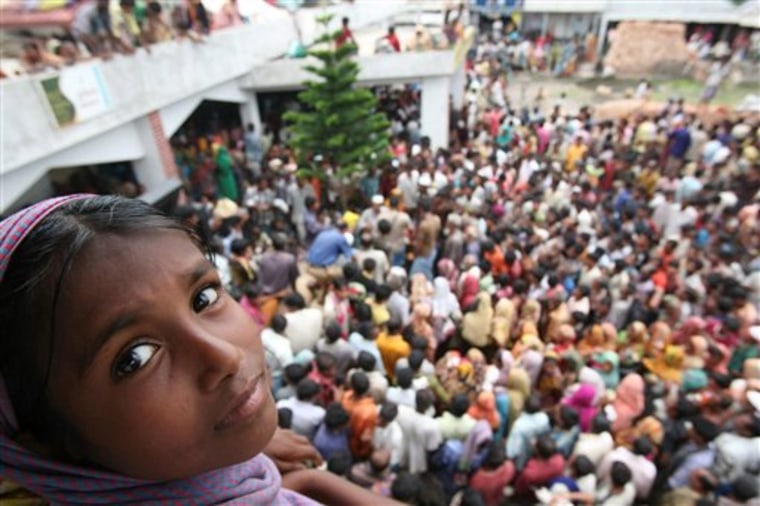Hundreds of thousands of people flooded out of their homes by deadly Cyclone Aila crowded government shelters in eastern India and Bangladesh on Friday, and officials said the risk of disease outbreaks was growing.
The death toll from Monday's cyclone rose to 264 people in the two countries.
In India, the cyclone left 500,000 homeless, said B.C. Patra, a senior official in worst-affected West Bengal state's Emergency Relief Department. More than 130,000 are crowded in government-run camps, and relief officials are using aircraft and boats to deliver food, water and medicine to others sheltering in schools, office buildings or friends' homes, he said.
Bangladesh's Food and Disaster Management Ministry has stopped announcing the number of displaced people, but on Friday said several thousand people were still in shelters.
The ministry put the death toll at 147 in Bangladesh, though media reports said at least 178 people have died. Most drowned or were washed away when storm surges hit coastal areas.
The official death toll in India stood at 117, Patra said.
Medical teams fear an outbreak of waterborne diseases such as diarrhea and typhoid from a lack of clean drinking water.
Many village wells have been submerged by salty water, making them unfit for drinking, officials said.
The storm also caused devastation in the Sundarbans, a tangle of mangrove forests that is home to one of the world's largest tiger populations.
Conservationists have expressed concern over the tigers' fate, though the extent of damage to their habitat remains unclear.
It is believed that about 250 tigers live on the Indian side of the Sundarbans and another 250 live on the Bangladeshi side.
